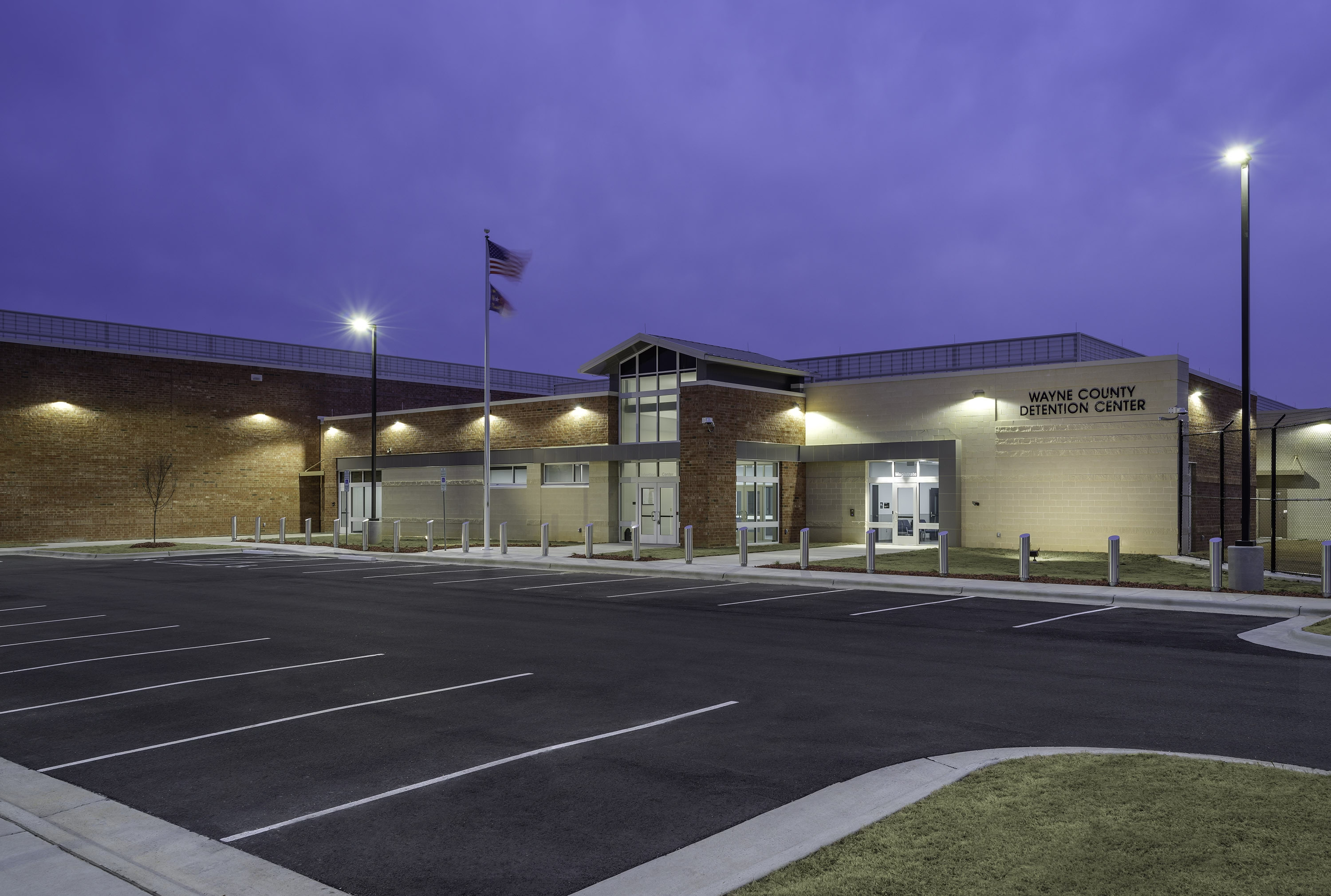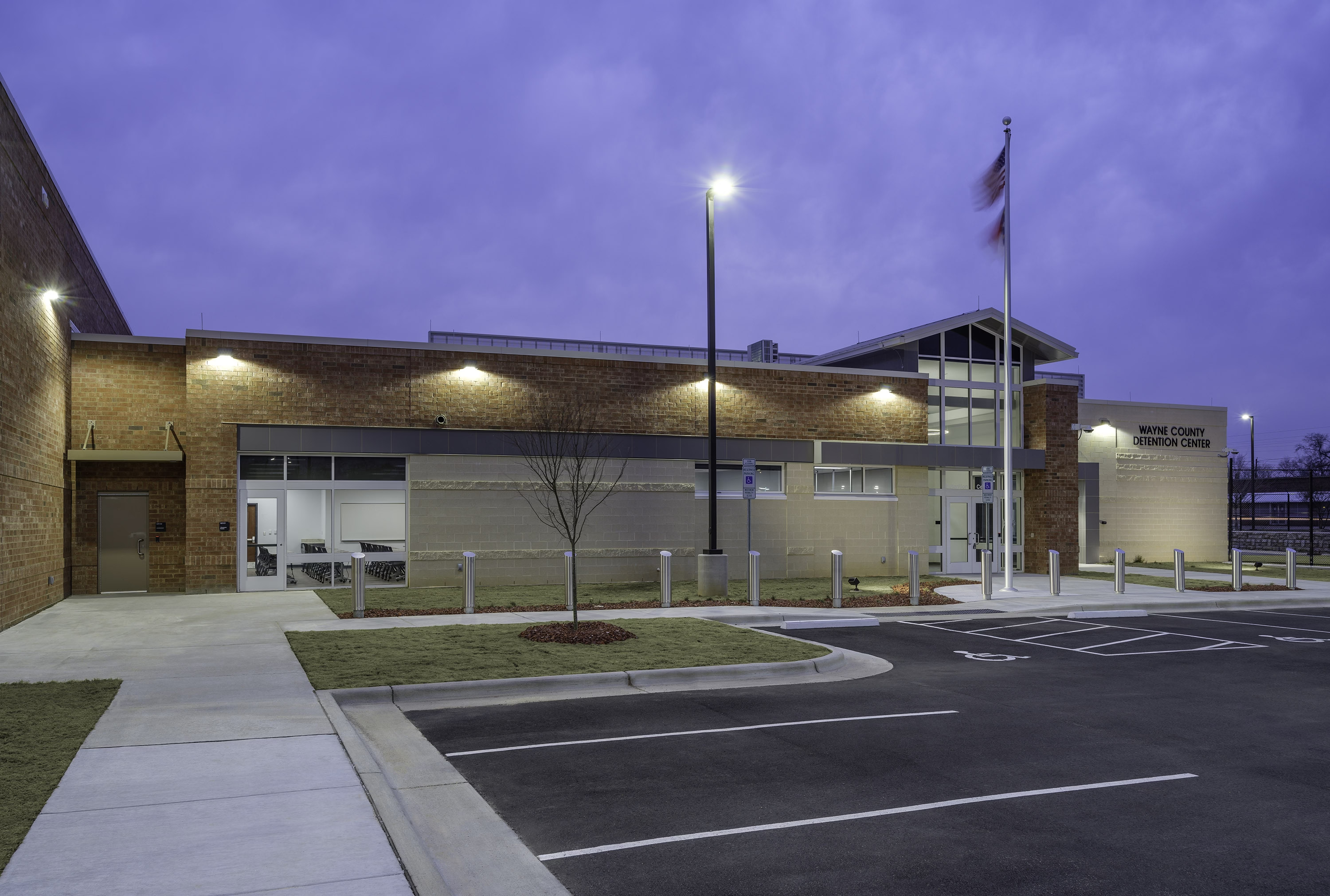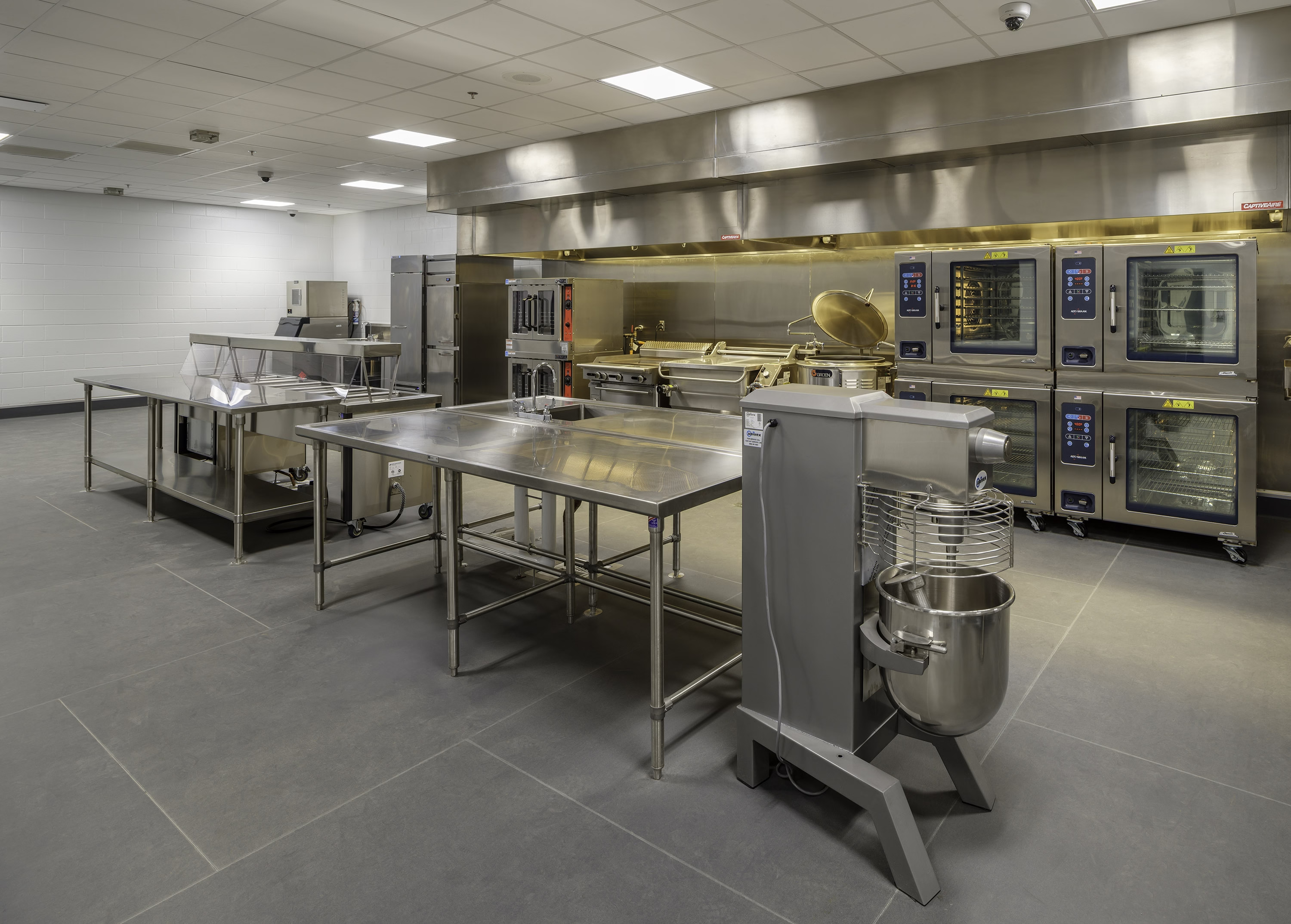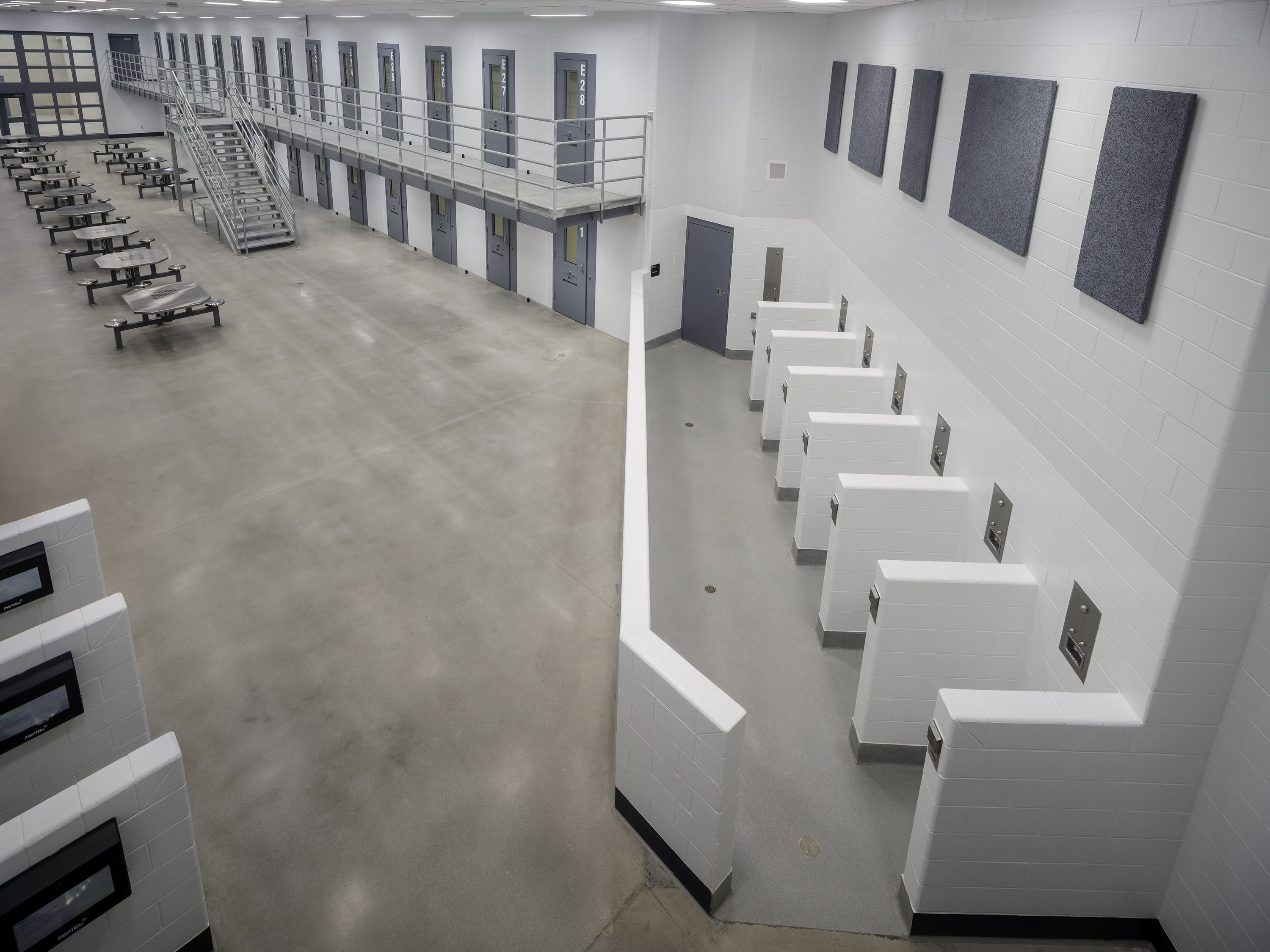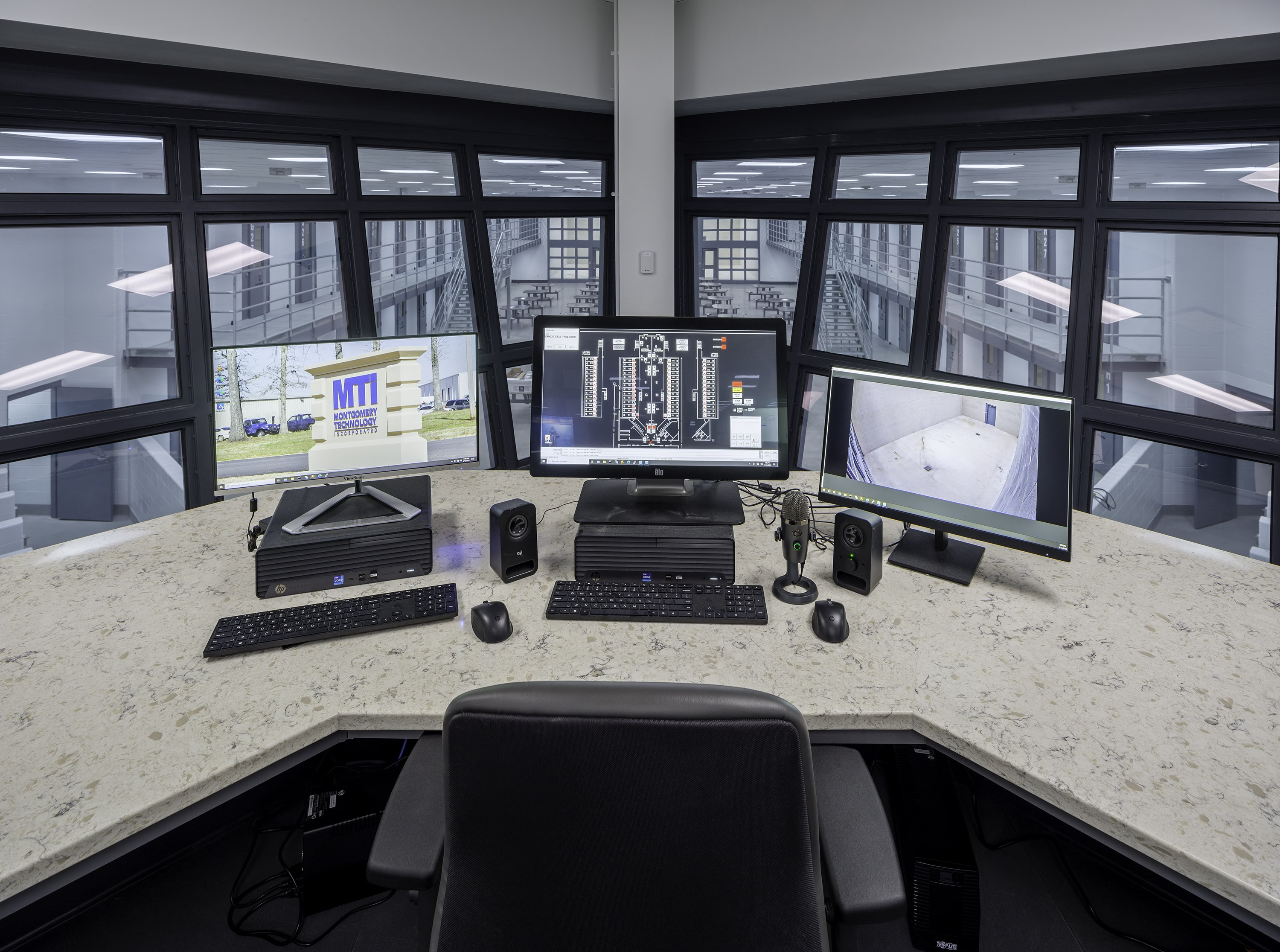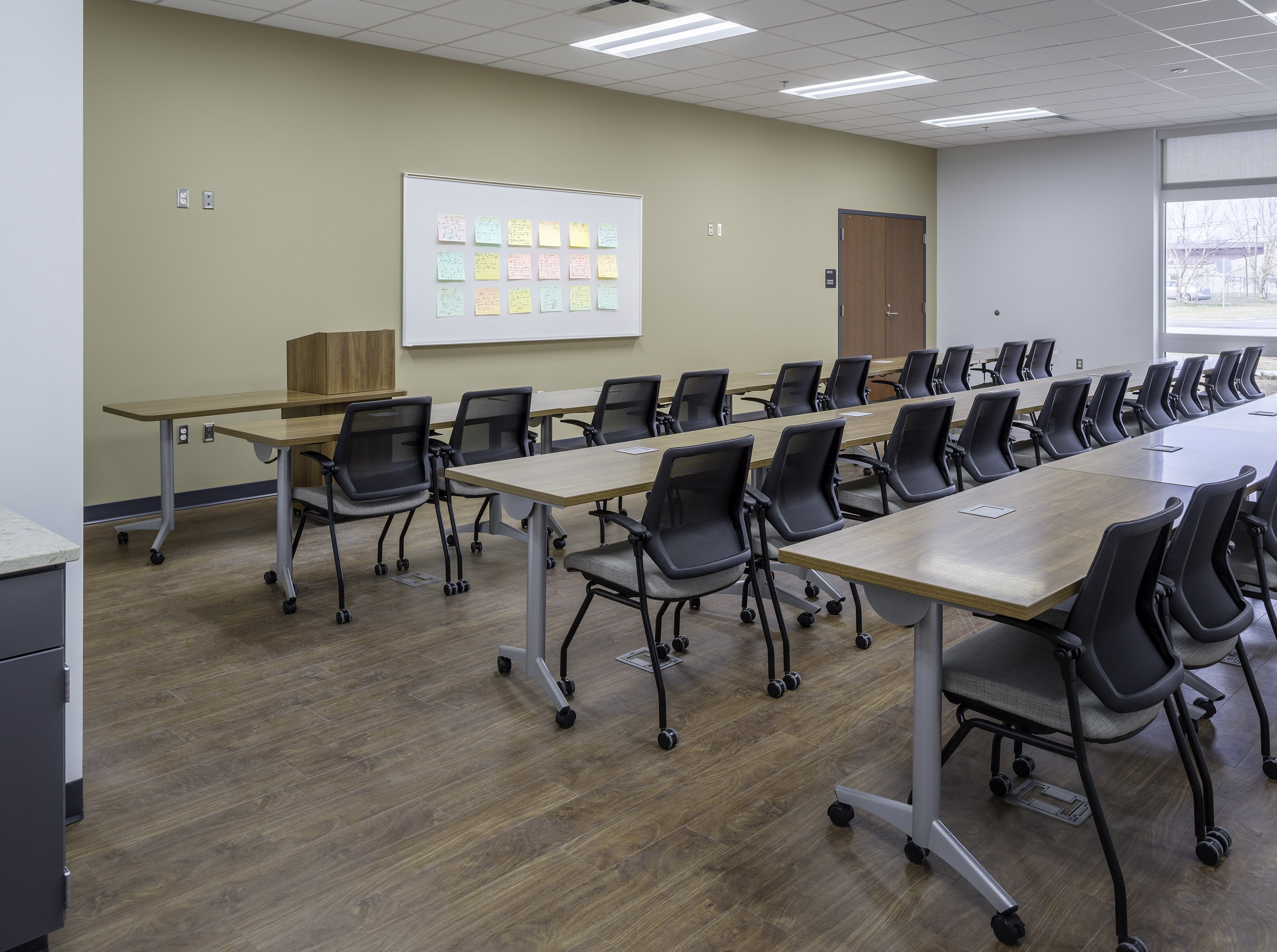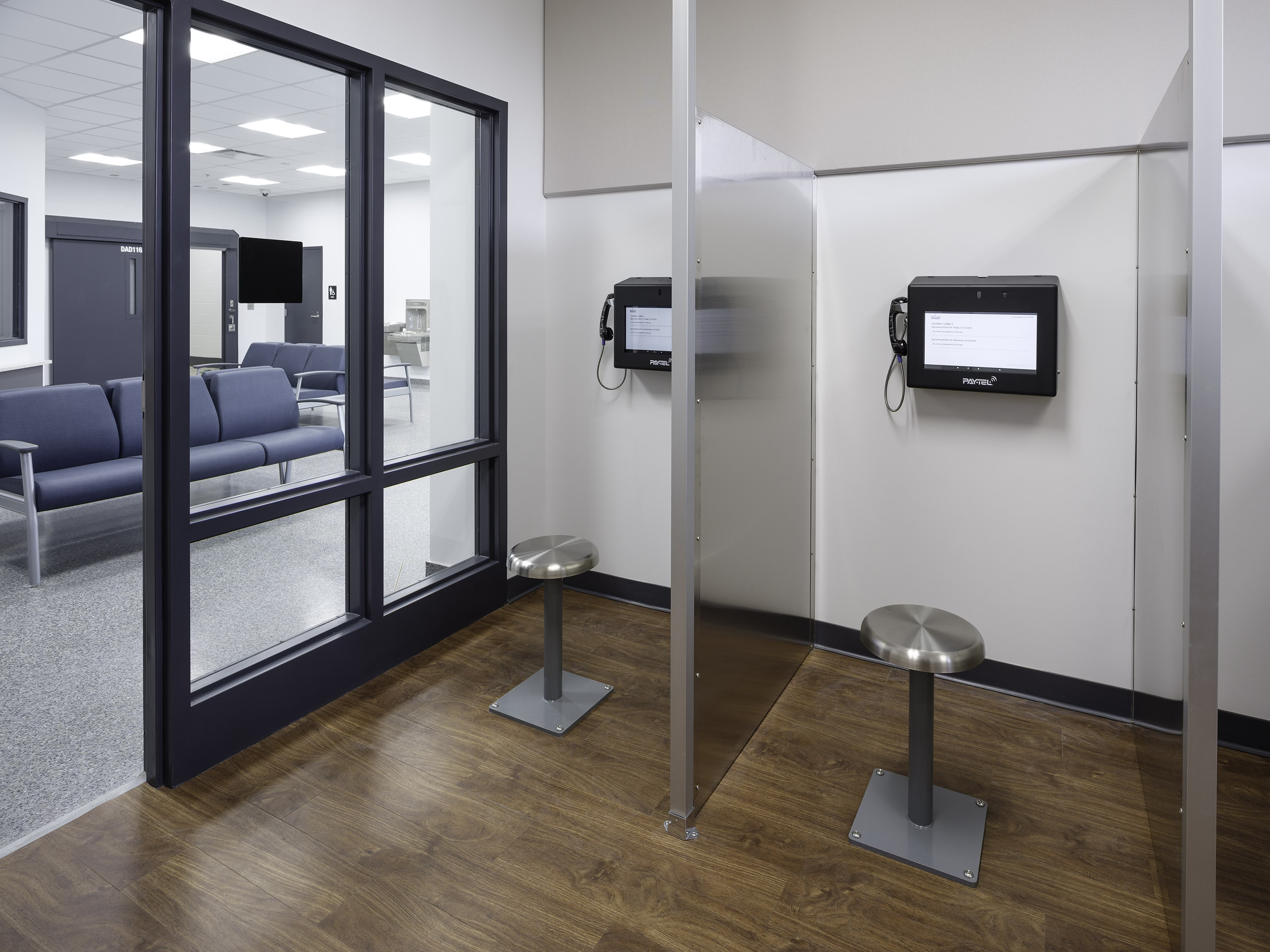
Wayne County Detention Center
Wayne County’s commitment to modernizing its correctional facilities led to a complete justice campus strategy that prioritized staff and inmate security, safety, and operational efficiency. The county recognized that replacing its aging and inefficient uptown detention center with a new facility on a justice campus would address critical infrastructure needs while positioning the county for future growth.
Phase One: Establishing the Foundation
The Cary A. Winders Detention Center marked the beginning of Wayne County’s ambitious justice campus plan. Completed in 2016, this 221-bed satellite facility served as the cornerstone of what would become a multi-phase development designed to transform the county’s approach to corrections.
Moseley designed the satellite facility to include three dormitories housing 192 minimum-security inmates in open-bunk configurations, complemented by one dormitory featuring 29 closed-cell single-bunk units. While this initial phase successfully alleviated overcrowding at the existing uptown facility, inmate classification challenges persisted. The county recognized that a complete solution would require an additional, larger detention center specifically designed to house the uptown facility’s inmate population.
Phase Two: The Replacement Detention Center
in 2021, Wayne County advanced its justice campus goals with the design of a second detention center—a 220-bed, 72,800-square-foot replacement facility that addresses the complex needs of contemporary correctional operations. This facility is a significant upgrade in both capacity and functionality compared to the aging uptown center it was designed to replace.
The replacement detention center features four 55-bed housing pods configured to accommodate both male and female inmates across different security classifications. A single elevated central control room provides complete oversight of all housing areas, enhancing both security and operational efficiency. Each cell incorporates prefabricated steel construction with rear chase access, ensuring durability while facilitating maintenance and utility access.
Complete Facility Design
Beyond housing, the replacement detention center includes a fully equipped kitchen capable of serving the facility’s population. Dedicated intake and booking facilities streamline processing procedures, with intake areas designed to support various assessment and screening functions that address diverse inmate needs upon entry. A secure vehicular sallyport provides protected access for law enforcement vehicles, while magistrate offices enable on-site judicial functions. Administrative and support spaces complete the facility’s thorough design.
The positioning of both facilities on the shared campus site offers Wayne County’s law enforcement increased operational convenience. The proximity of the two detention centers enables efficient resource sharing and coordinated operations while maintaining appropriate security protocols.
Programming for Recovery and Rehabilitation
The facility design accommodates various programming spaces that support inmate services beyond basic housing. Group meeting areas and multipurpose rooms were incorporated to facilitate counseling sessions, educational programs, and peer support activities. These spaces specifically support the Wayne County Detention Center Substance Misuse Program (WCDCSMP), which was established in 2021 and has been recognized as a model for jail-based recovery and reentry across North Carolina and beyond.
Medical facilities within the detention center were planned to support various treatment protocols and health assessments. The design ensures that medical staff can efficiently evaluate and monitor inmate health needs while maintaining security requirements throughout the facility.
Flexible Design for Future Growth
Recognizing the importance of fiscal responsibility while planning for future needs, Moseley developed alternative design approaches that balanced the county’s immediate requirements with long-term expansion capabilities. The design process included numerous bid options ranging from 220 to 440 beds, providing Wayne County with flexibility in selecting the scope that best aligned with available funding.
Although the county selected the 220-bed configuration for immediate construction, the replacement detention center was positioned to accommodate future expansion. When additional funding becomes available, the facility can efficiently incorporate additional housing pods, ultimately reaching a capacity of 440 beds. All major building systems—including the kitchen, administrative spaces, support facilities, and programming areas—were sized to serve this expanded capacity.
Integrated Campus Plan
The two-facility justice campus represents Wayne County’s forward-looking approach to correctional facility planning. The satellite facility addresses minimum-security housing needs while the replacement detention center handles more complex inmate classifications and higher security requirements. Together, these facilities resolve the operational challenges that plagued the uptown facility while establishing a foundation for continued growth and adaptation.
The campus design recognizes that effective correctional facilities must serve multiple stakeholders—inmates, staff, law enforcement, and the broader community. Through deliberate planning and purposeful design, Wayne County has created a justice campus that enhances public safety while providing a framework for sustainable operations, rehabilitation programming, and future expansion.





